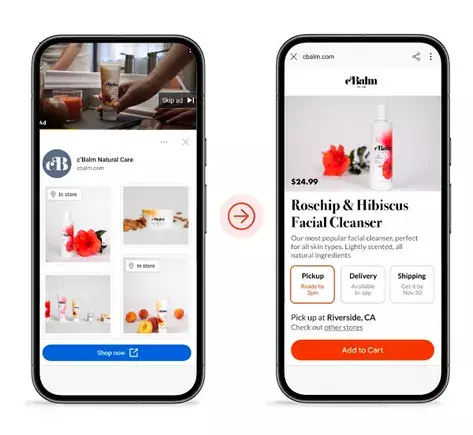Google’s latest advancements in advertising technology unveil a bold new frontier: seamlessly integrating ads within AI-generated responses. This shift signifies more than just a new feature; it represents a fundamental transformation in how brands connect with consumers during their decision-making journey. Traditionally, search ads relied heavily on ranking algorithms and paid placements that appeared alongside organic results. The introduction of ads within AI-generated overviews means that brands now have the opportunity to embed themselves into the very fabric of automated information dissemination.
The innovation is born out of an understanding that consumers’ information needs are becoming increasingly sophisticated and context-driven. When a potential customer asks a question—say, about household repairs or product recommendations—Google’s AI doesn’t just provide a webpage link; it offers a comprehensive, conversational summary. Embedding sponsored content directly into these summaries ensures that brands can insert themselves into these pivotal moments of discovery. It’s akin to being present in a virtual assistant’s inner circle, right at the moment when a user is most receptive to personalized offers.
However, this development raises critical questions about user experience and advertising ethics. Will these subtle integrations clutter the AI’s helpfulness, or will they enhance relevance? The answer hinges on Google’s ability to balance commercial interests with user trust. For marketers, tapping into AI overviews via AI Max campaigns offers a golden ticket—increased visibility amid a crowded landscape—but success isn’t guaranteed. The placement remains in testing, and their effectiveness will depend on how prominently users scroll or engage with these sponsored snippets.
This shift also demands a strategic reevaluation: brands must craft compelling, subtle advertising that aligns with AI responses to avoid seeming intrusive. It’s an experiment in moderation—pushing the boundaries of native advertising within AI environments while ensuring that users retain a positive perception of both Google and the brands they encounter.
Empowering Content Creation Through AI-Driven Tools
Google’s push into AI-generated content is nothing short of revolutionary for creative teams and marketers alike. The new features in Asset Studio symbolize a leap toward automation that doesn’t sacrifice authenticity. These tools allow brands to generate high-quality visual and video assets quickly—streamlining the often resource-heavy process of content production.
Imagine uploading a simple product photo and instantly receiving a tailored scene that resonates with your target audience: a model strolling through the park, a chef in a cozy kitchen, or a traveler on a scenic trail—all featuring your product seamlessly integrated into the scene. This capability transforms brainstorming sessions into rapid production cycles, reducing lead times and lowering costs. More importantly, it offers a consistency that’s difficult to achieve with manual editing, ensuring your branding stays coherent across all campaigns.
But while the allure of AI-driven creative is undeniable, it invites skepticism. Can AI truly replicate the nuanced storytelling that human creatives craft? The answer is nuanced: these tools are best used as accelerators, not replacements. They provide a foundation upon which human insight and emotional intelligence can build, allowing brands to craft more tailored, scaled content without losing their identity.
The addition of batch processing and text-to-video features further enhances this approach, offering marketers the ability to generate a multitude of variants for testing and optimization. Moreover, the collaborative sharing features suggest a future where creative teams across different departments or agencies can review and iterate on assets in real time, fostering innovation and agility.
Strategic Opportunities and Challenges Ahead
What do these technological leaps mean in the broader context of digital marketing? For one, advertisers who embrace these innovations will gain a competitive edge during the lucrative holiday shopping season. With YouTube’s new shoppable masthead ads, brands can now capitalize on a video platform where engagement rates are exceptionally high, especially during seasonal peaks.
However, the rapid evolution of Google’s advertising landscape also presents a paradox. While new tools provide unprecedented capabilities, they also demand higher levels of strategic sophistication. Marketers must develop nuanced approaches to balance sponsored placements, AI-driven creative assets, and audience targeting to avoid overwhelming consumers with cluttered messages.
Moreover, with increasing reliance on AI-generated content, brand safety becomes a pressing concern. Google’s upcoming text guidelines and brand safety features aim to address this—yet, it remains to be seen whether these measures are sufficient to prevent unintended missteps in creative execution.
Google’s latest innovations signal a pivotal moment for digital advertising—where AI acts as both a creative partner and a distribution channel. Embracing these changes requires a mindset shift: viewing technology not just as a tool but as an integral part of a creative and strategic ecosystem. Those who adapt swiftly and thoughtfully will be those who seize the future of marketing, turning technological disruption into their most powerful asset.


Leave a Reply